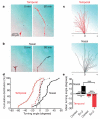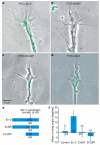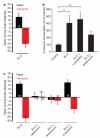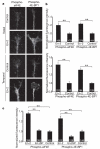The transcription factor Engrailed-2 guides retinal axons
- PMID: 16267555
- PMCID: PMC3785142
- DOI: 10.1038/nature04110
The transcription factor Engrailed-2 guides retinal axons
Abstract
Engrailed-2 (En-2), a homeodomain transcription factor, is expressed in a caudal-to-rostral gradient in the developing midbrain, where it has an instructive role in patterning the optic tectum--the target of topographic retinal input. In addition to its well-known role in regulating gene expression through its DNA-binding domain, En-2 may also have a role in cell-cell communication, as suggested by the presence of other domains involved in nuclear export, secretion and internalization. Consistent with this possibility, here we report that an external gradient of En-2 protein strongly repels growth cones of Xenopus axons originating from the temporal retina and, conversely, attracts nasal axons. Fluorescently tagged En-2 accumulates inside growth cones within minutes of exposure, and a mutant form of the protein that cannot enter cells fails to elicit axon turning. Once internalized, En-2 stimulates the rapid phosphorylation of proteins involved in translation initiation and triggers the local synthesis of new proteins. Furthermore, the turning responses of both nasal and temporal growth cones in the presence of En-2 are blocked by inhibitors of protein synthesis. The differential guidance of nasal and temporal axons reported here suggests that En-2 may participate directly in topographic map formation in the vertebrate visual system.
Figures




References
-
- Retaux S, Harris WA. Engrailed and retinotectal topography. Trends Neurosci. 1996;19:542–546. - PubMed
-
- Itasaki N, Nakamura H. A role for gradient en expression in positional specification on the optic tectum. Neuron. 1996;16:55–62. - PubMed
-
- Prochiantz A, Joliot A. Can transcription factors function as cell-cell signalling molecules? Nature Rev. Mol. Cell Biol. 2003;4:814–819. - PubMed
-
- Cheng HJ, Nakamoto M, Bergemann AD, Flanagan JG. Complementary gradients in expression and binding of ELF-1 and Mek4 in development of the topographic retinotectal projection map. Cell. 1995;82:371–381. - PubMed
Publication types
MeSH terms
Substances
Grants and funding
LinkOut - more resources
Full Text Sources
Other Literature Sources
Molecular Biology Databases
Research Materials

